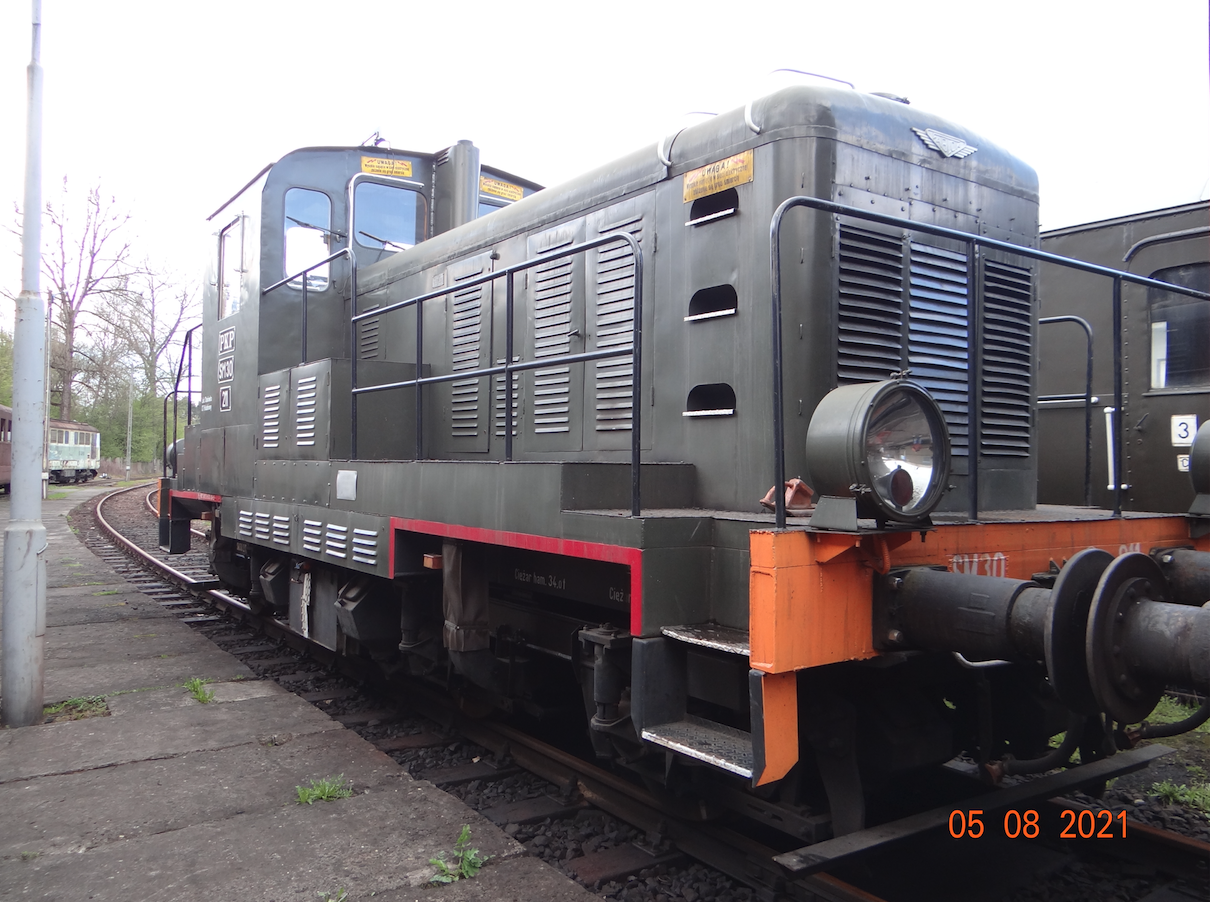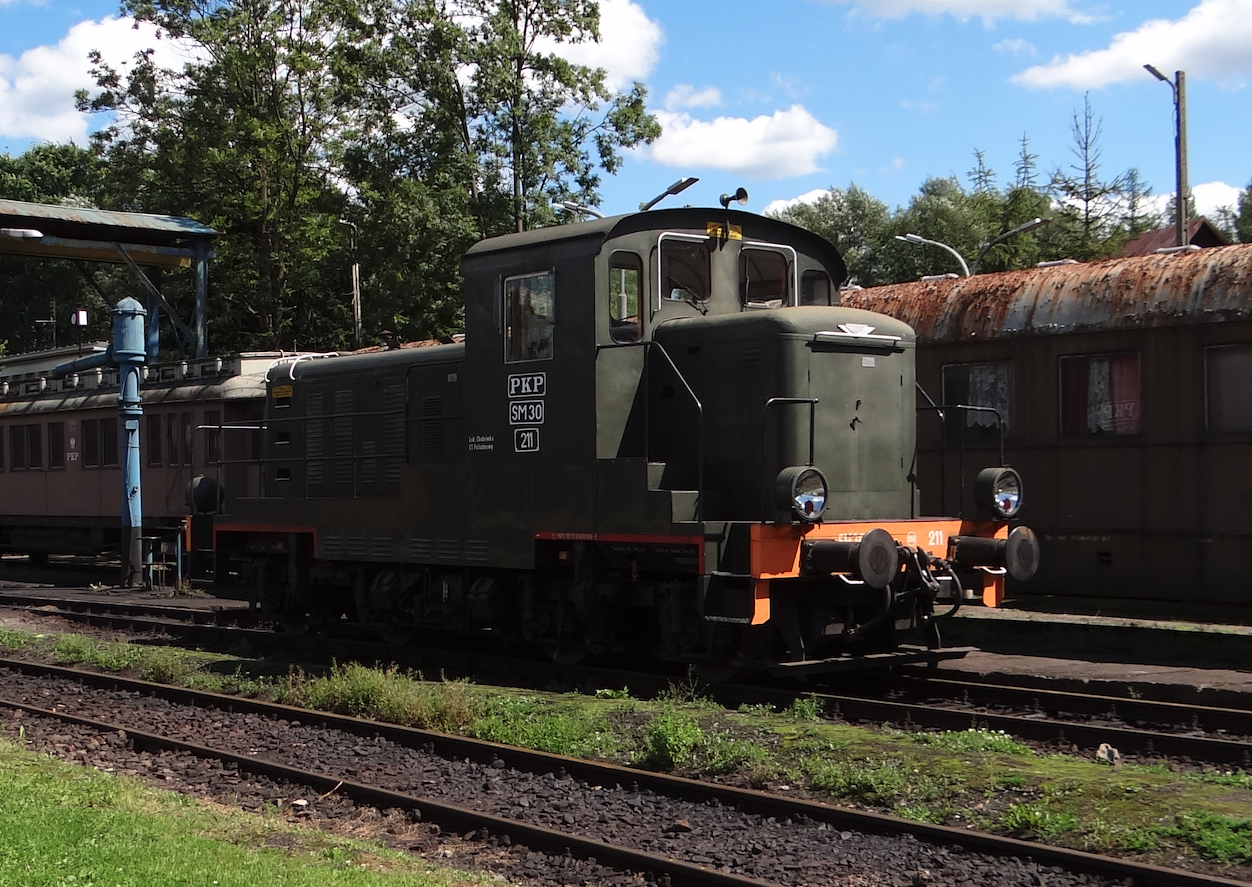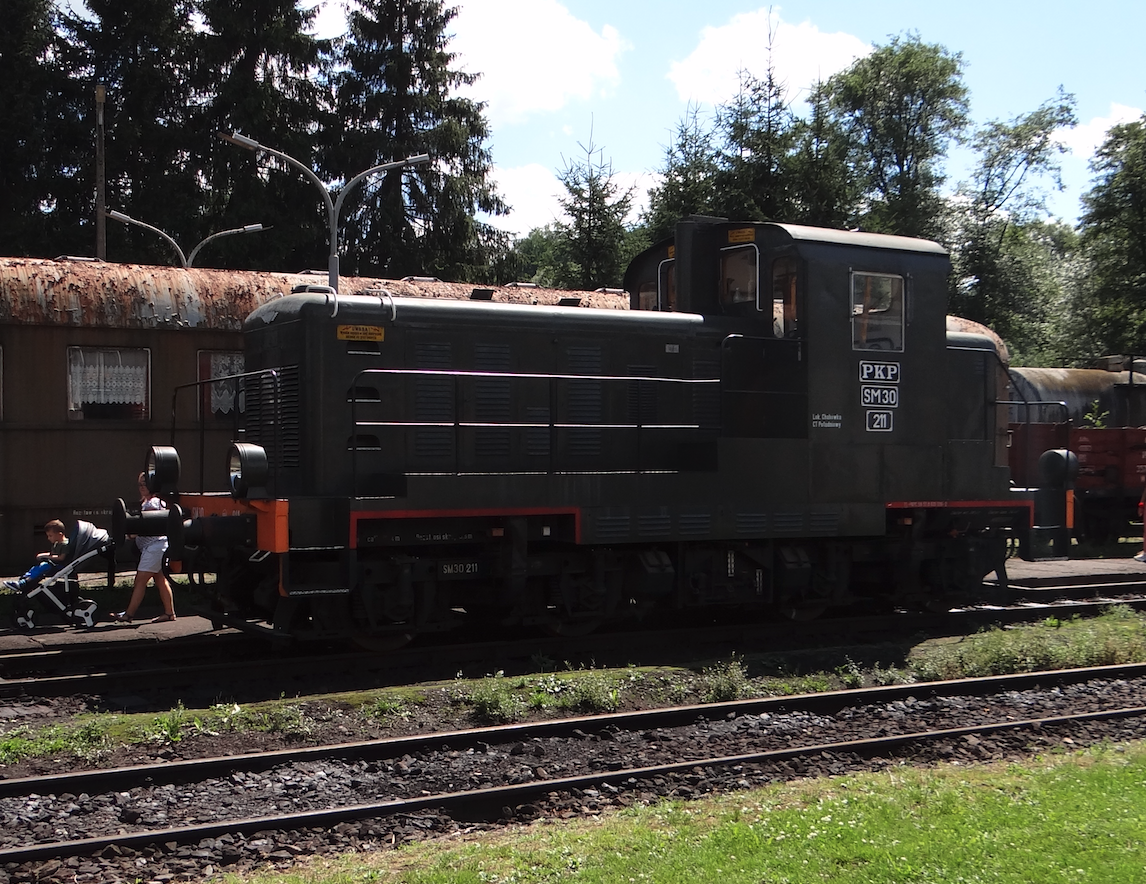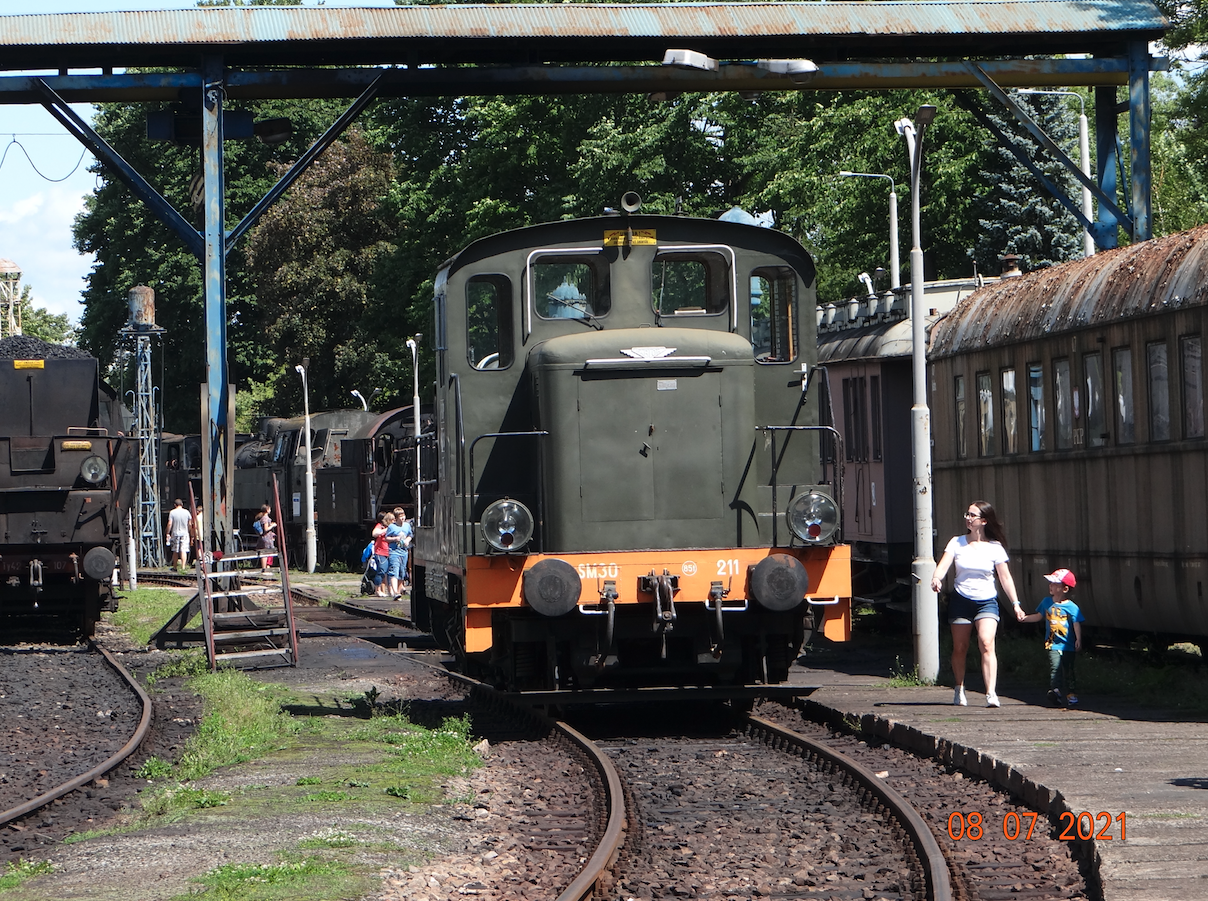Kraków 2021-12-09
Diesel locomotive type 1D (Ls300E), marked in PKP SM30.
The type 1D diesel locomotive (Ls300E), designated SM30 at the Polish State Railways, was the first successful Polish diesel locomotive with an electric transmission. The design of the locomotive was developed at the Central Design Office of the Rolling Stock Industry in Poznań in the period 1954 - 1955. The locomotive in the office had the designation 1D. From 1957, the locomotive was produced in serine at the Locomotive Factory in Chrzanów, as a factory type Ls300E.

The locomotive was based on components produced in Poland. The locomotive was commonly referred to as "crossing a tank with a tram". The locomotive performed very well as a maneuvering and driving light trains with a total weight of up to 300 tons. The locomotive was powered by a 300 HP Wola V-Roka 300 diesel engine. The engine has 12-cylinder V-arrangement. The engine has no supercharger and no flywheel. Dry type oil pan.
The first two locomotives were used for testing. Noticed defects and faults were systematically removed. Serial production started in 1958. After numerous modifications, from 1962, locomotives of the second version were produced. First of all, a 350 HP Wola 2DVSa-350 internal combustion engine with a flywheel was used. The compressor imported from the GDR was replaced by a Polish one, type D2P-115, with a capacity of 1.7 m3 of air per minute. In the running gear, the slide bearings were changed to roller roller bearings of the NJP 130 type. Polish acid batteries of the GE 165 type were used. The brake taps were doubled so that the locomotive can be controlled from the right and left side of the cabin. Fuel tanks decreased. Lower with a capacity of 910 liters.
909 SM30 series locomotives were built, 302 of which were bought by PKP, and the rest were bought by the factory railways: mines, steel mills, shipyards, power plants and others. In the following years, some locomotives were equipped with licensed Henschel 16H12A engines with a capacity of 370 HP.
Construction SM30.
The locomotive was powered by a 300 HP Wola V-Roka 300 diesel engine. The engine has 12-cylinder V-arrangement. The engine has no supercharger and no flywheel. Dry type oil pan. Later, the Wola 2DVSa-350 engine with 350 HP was used. In the 1980s, some of the locomotives were modernized using 16H12A engines, licensed by Henschel.
The engine, through a flexible clutch disc, drives the main PABOM 186a-spce DC generator with mixed excitation, 6-pole, with a maximum voltage of 600 V. The main DC generator was an adaptation of a stationary generator and was used for the first time as a traction railway generator. The engine and the generator were placed on a common frame, forming a power generator.
The locomotive was mounted on two bogies. Each of the trolleys is two-axle. Each axle is driven by one electric motor, commonly used in tram rolling stock. Motors type LT31, with a power of 4 x 60 kW, a voltage of 600 V and a current of 113 A, at 895 rpm. The traction motors are air-cooled by a fan driven by V-belts from the main generator.
The mainstay of the locomotive is made of thick rolled steel profiles connected by welding. There are endcarriages at both ends. The endcarriages are equipped with couplings with springs with a strength of 85 tons. Traditional rail buffers are placed in the endcarriage. Drive trolleys are made as box type. The bogies have axle boxes in which the axle slide bearing housings work.
Under the front casing of the locomotive there are the main power generator, cooling system radiator, oil cooler, combustion engine radiator fan, oil pump, fuel pump, coolant pump, air compressor, traction engine fan, and the exhaust system of the internal combustion engine. Knorr brake system.
There are service platforms around the locomotive. The driver's cab has an entrance door in the front walls. Inside the cabin, on the front wall, there is a locomotive control and control panel. The cabin is heated by two water heaters powered by water from the engine cooling system. The cab wipers are powered by compressed air. The side windows are opened by folding downwards. The cabin is lined with glass wool and perforated metal sheet for insulation and noise reduction. In the back of the cabin there is a door to the electrical cabinet. The rear casing of the locomotive conceals the locomotive's low and high voltage electrical systems.
Two lower fuel tanks (diesel) with a capacity of 2 x 600 liters were placed under the locomotive's mainstay. Then, tanks with a capacity of 910 liters were used. A third fuel tank with a capacity of 150 liters is located in the roof of the driver's cab. The batteries are located under the driver's cab.




Data T-T SM30:
Fablok manufacturer in Chrzanów. Production in the period 1956 - 1970. Overall length 10.14 m. Width 3.13 m. Height 4.30 m. Bo'Bo 'axis system. Wheel diameter 0.85 m. Service weight 36,000 kg. Top speed 60 km / h.
Written by Karol Placha Hetman
